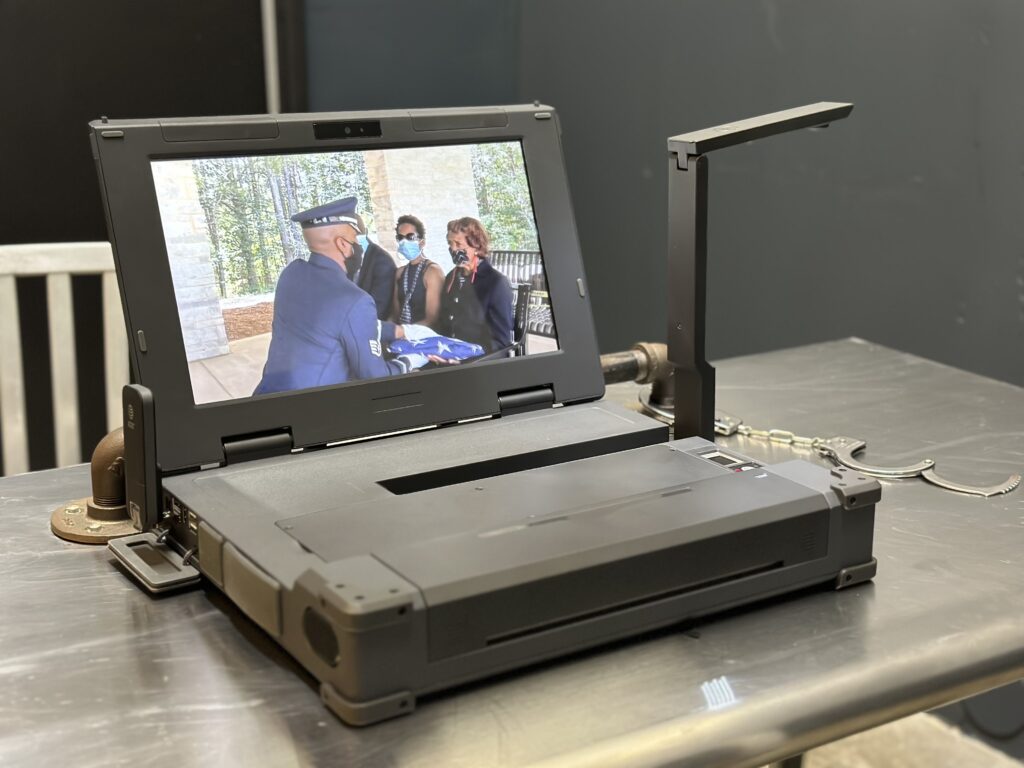What Families Should Know
Grief is hard enough. But when your loved one is incarcerated and a death occurs in the family, it becomes even more complicated. Families often ask: “How can my incarcerated loved one attend a funeral?”
The answer increasingly lies in virtual access streaming the funeral directly into the correctional facility. But while it may seem simple on the surface, the process behind the scenes is complex, highly regulated, and requires coordination across multiple parties.
This guide provides an overview of what families should understand, without revealing the proprietary or security-sensitive details of how virtual inmate funeral streaming is implemented.

Why Virtual Funerals for Inmates Are Growing
Most correctional facilities deny physical attendance at funerals due to:
- Security risks
- Staffing shortages
- Transportation costs
- Strict compassionate release criteria
As a result, organizations like Compassionate Reprieve have pioneered GriefTech solutions allowing inmates to participate in a loved one’s funeral through secure, monitored, virtual access.
This is not just about convenience it’s about dignity, mental health, and emotional closure.
What Families Should Know About the Process
While we don’t publicly share the internal procedures due to security protocols, here are key insights that can help you prepare:
1. It Starts with a Request
The process usually begins with a family member, chaplain, or corrections counselor initiating a request for virtual access.
This may require:
- Proof of death (obituary or funeral program)
- Confirmation of relationship
- Scheduled time for the service
Each facility has its own criteria for approval.
2. The Facility Must Approve
Not every institution offers this option.
Approval depends on:
- The facility’s security level
- The inmate’s behavioral record and classification
- The institution’s technology infrastructure
Some systems require warden sign-off, while others work through chaplaincy or mental health units.
3. A Secure Streaming Solution Must Be Used
Not just any Zoom or Facebook Live stream will qualify. For safety and policy reasons, only pre-vetted, secure, DOJ-compliant platforms can be used.
At Compassionate Reprieve, we provide:
- Private streaming links
- AI-monitored, filtered content
- Chaplain or staff involvement (as required)
This ensures inmate safety, institutional trust, and family dignity.
4. No Two Situations Are Alike
Some facilities allow live viewing, others offer recorded playback. Some require headphones, others use screened rooms. Some allow the inmate to write a message, others restrict all communication.
It’s important to be patient grief is universal, but policy is not.
How Families Can Support the Process
While you can’t control internal procedures, you can help move things forward by:
- Providing funeral details early
- Cooperating with chaplains or liaisons
- Respecting the facility’s rules
- Preparing emotionally for delays or limitations
In many cases, simply knowing their family is advocating for them is a comfort to the person inside.
Why the Process Remains Private
Due to security regulations and institutional risk policies, we don’t publicly share:
- Internal tech setup
- Stream routing methods
- Facility communication protocols
- Staff workflows
This protects everyone — the inmates, the families, the institutions, and the integrity of the grieving process.
What You Can Expect
- Dignified, controlled access to a sacred family moment
- A secure channel that meets facility standards
- Real-time or time-shifted participation options
- A small but meaningful act of healing
Final Word: Closure Is a Right — Not a Privilege
Your incarcerated loved one may not be able to walk into a church or stand by the grave. But with the right support, they can still say goodbye.
And that moment — no matter how small — can bring peace on both sides of the wall.
https://en.wikipedia.org/wiki/Compassionate_reprieve
https://www.facebook.com/compassionatereprieve
https://www.linkedin.com/company/compassionatereprieve
https://www.instagram.com/compassionatereprieve
